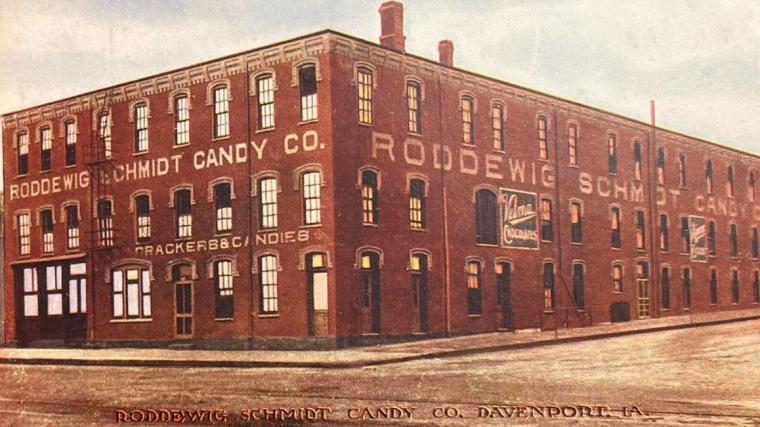
“Sweet Treats: German Influence on the QC Candy Industry" at the German American Heritage Center -- through May 19.
Through Sunday, May 19
German American Heritage Center, 712 West Second Street, Davenport IA
With special attention paid to Roddewig Schmidt Candy Company, Velma Chocolates, and other former Quad Cities institutions, Davenport's German American Heritage Center will, through May 19, explore different candy manufacturers in our area in the exhibition Sweet Treats: German Influence on the QC Candy Industry, demonstrating how the Quad Cities were once home to numerous candy manufacturers of German heritage popular both locally and regionally.
The history of chocolate dates back well over 5,000 years. The cacao tree is native to the tropics of the Americas, while the cocoa bean was first domesticated at least 5,300 years ago in what is present-day southeast Ecuador by the Mayo-Chinchipe culture, before being introduced in Mesoamerica. Originally prepared as a drink, chocolate was served as a bitter liquid, mixed with spices or corn puree. In Mesoamerica, it was believed to be an aphrodisiac and to give the drinker strength. Today, such drinks are also known as "Chilate" and are made by locals in the south of Mexico and the north triangle of Central America (El Salvador, Guatemala and Honduras). After its arrival to Europe in the 16th century, sugar was added to it and it became popular throughout society, first among the ruling classes and then among the common people. In the 20th century, chocolate was considered essential in the rations of United States soldiers during wartime.
Today, roughly two-thirds of the world's cocoa is produced in Western Africa, with Ivory Coast being the largest source, producing a total crop of 1,448,992 Tonnes. Ghana, Nigeria, and Cameroon are other West African countries among the top five cocoa-producing countries in the world. Like many food industry producers, individual cocoa farmers are at the mercy of volatile world markets. The price can vary from between $945 and $5,672 per ton in the space of just a few years, and while investors trading in cocoa can dump shares at will, individual cocoa farmers cannot ramp up production and abandon trees at anywhere near that pace. Only three to four percent of "cocoa futures" contracts traded in the cocoa markets ever end up in the physical delivery of cocoa. Every year, seven to nine times more cocoa is bought and sold on the exchange than exists.
Sweet Treats: German Influence on the QC Candy Industry will be on display at the German American Heritage Center through May 19, with regular venue hours Tuesdays through Saturdays from 10 a.m. to 4 p.m. and Sundays from noon to 4 p.m. Exhibit entrance is free with $3-5 museum admission, and more information is available by calling (563)322-8844 and visiting GAHC.org.










